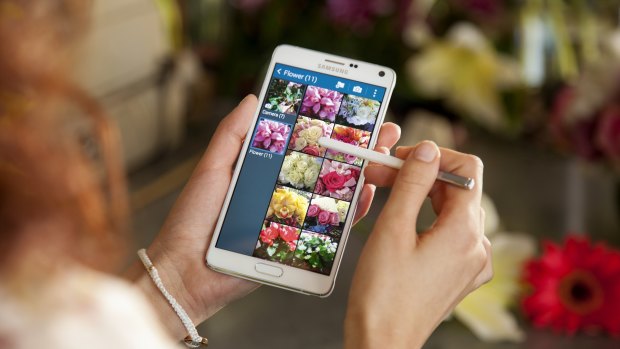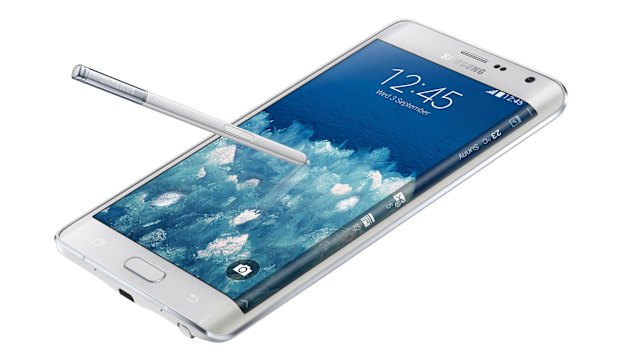This was published 9 years ago
Hands on review: Samsung Galaxy Note 4 and Note Edge
By Jenneth Orantia
- More from IFA: Hands on with Samsung's Gear VR headset
- More from IFA: Hands on with the very smart ASUS ZenWatch
There's certainly no shortage of big-screen phones on the market. The category Samsung created in 2011 with the original 5.3-inch Galaxy Note has since spawned numerous rivals from the likes of LG, Sony, Nokia and HTC.
But no company makes as much of the larger form as Samsung.

New flagship: Samsung's Galaxy Note 4.Credit: Samsung
While competitors simply provide more space to do the same things you can do on smaller-screened devices, Samsung has managed to come up with new ways to boost mobile productivity in every generation of its Note smartphones.
This year is no different. At the Samsung Unpacked event in Berlin overnight, the South Korean company unveiled two versions of its fourth-generation phablet. The Galaxy Note 4 is the "vanilla" version of the handset, and there's a limited edition called the Galaxy Note Edge that's identical save for a small curve on the right hand edge of the display.

The Galaxy Note Edge.Credit: Samsung
The edge display is used for showing a scrollable panel of information, with preloaded panels for things such as frequently used apps, notifications, weather and utilities. This feature is useful for getting to apps and information quicker, but the curve – ostensibly there to make the panels unobtrusive – seems gratuitous. Still, with Samsung making an SDK available to create third-party panels, this feature may become more compelling in the future.
The 5.7-inch screen size hasn't changed from the Galaxy Note 3, but the resolution has increased to 2560x1440 pixels. You can't actually fit more on the screen in the way you can with a desktop monitor with more pixels, nor is the difference as pronounced as the move from standard definition to HD, but images and text do appear sharper if you look closely.
The new Note also offers a handful of new ways to take notes. The pressure sensitivity on the bundled S Pen stylus has doubled from 1024 to 2048, providing a more natural handwriting experience. If you're inclined towards audio recording, the new selective playback feature can distinguish between up to eight people and isolate specific voices.
There's also a new Snap Note feature for taking photos of whiteboards, which automatically straightens the image (even if you've shot the whiteboard from an extreme angle) and recognises the text parts using optical character recognition.
The multi-window feature, which lets you run two apps split-screen and copy and paste information between them, has been tweaked so you can access it from the multitasking bar. There are also options for minimising apps into small icons or resizable floating windows.
VERDICT
Aside from the asymmetrical curved display on the Note Edge, which we're not entirely sold on, the upgrades in this generation of Note are more modest than in previous years. But it's still Samsung's most powerful smartphone. If you find it hard to be productive from a small smartphone screen, the Note 4 offers more ways to view, capture and share information than any other smartphone. Both devices will be available in Australia, but pricing and timing is yet to be confirmed.
The writer is attending IFA Berlin as a guest of Samsung.